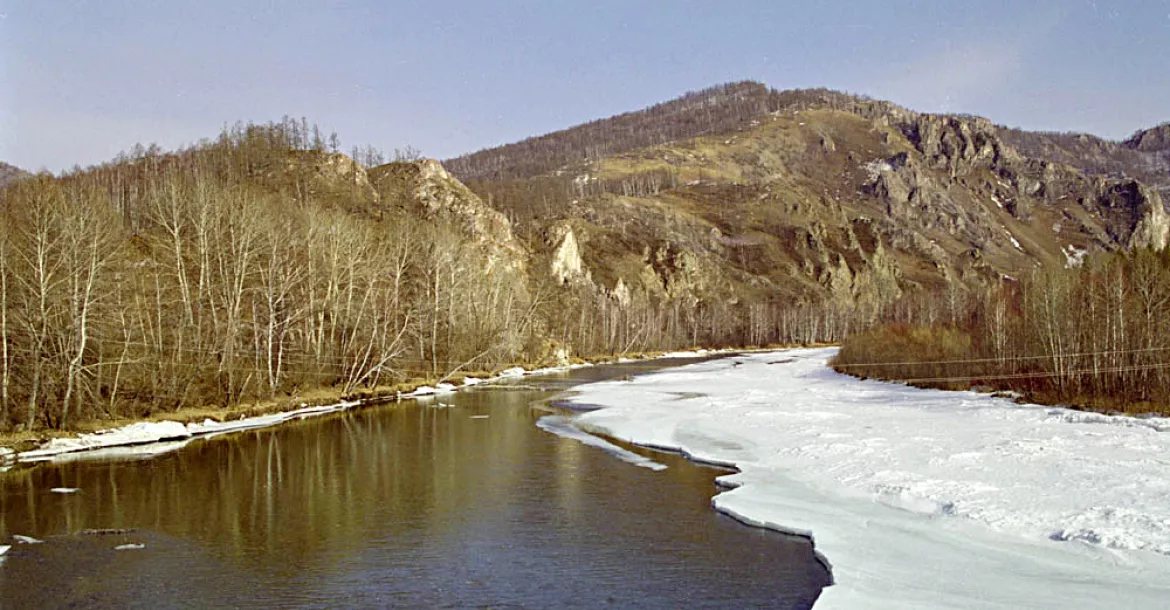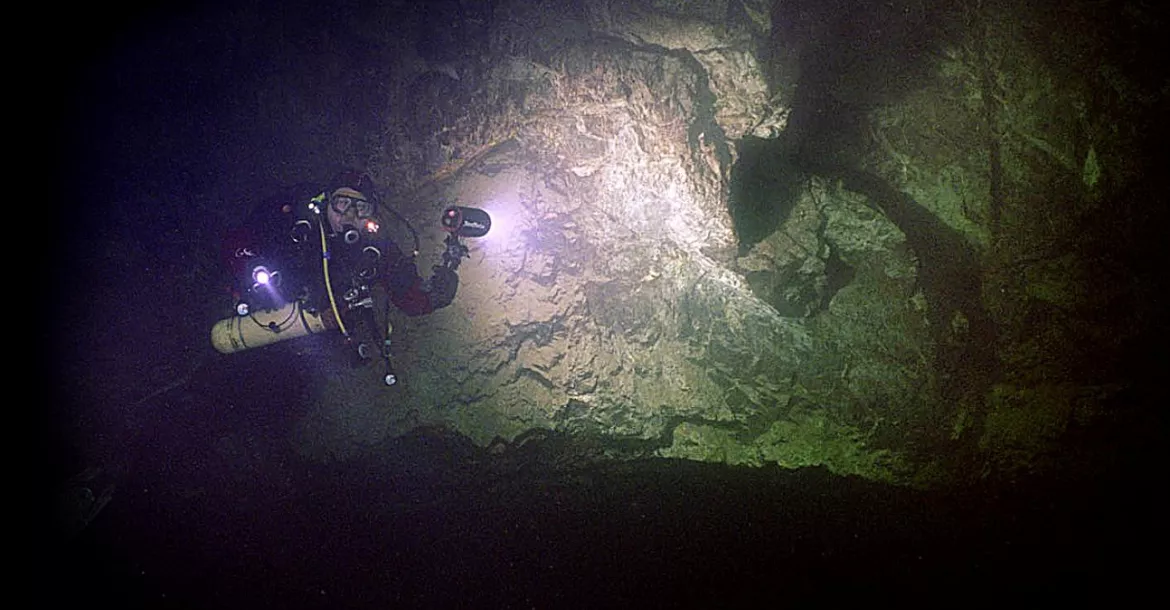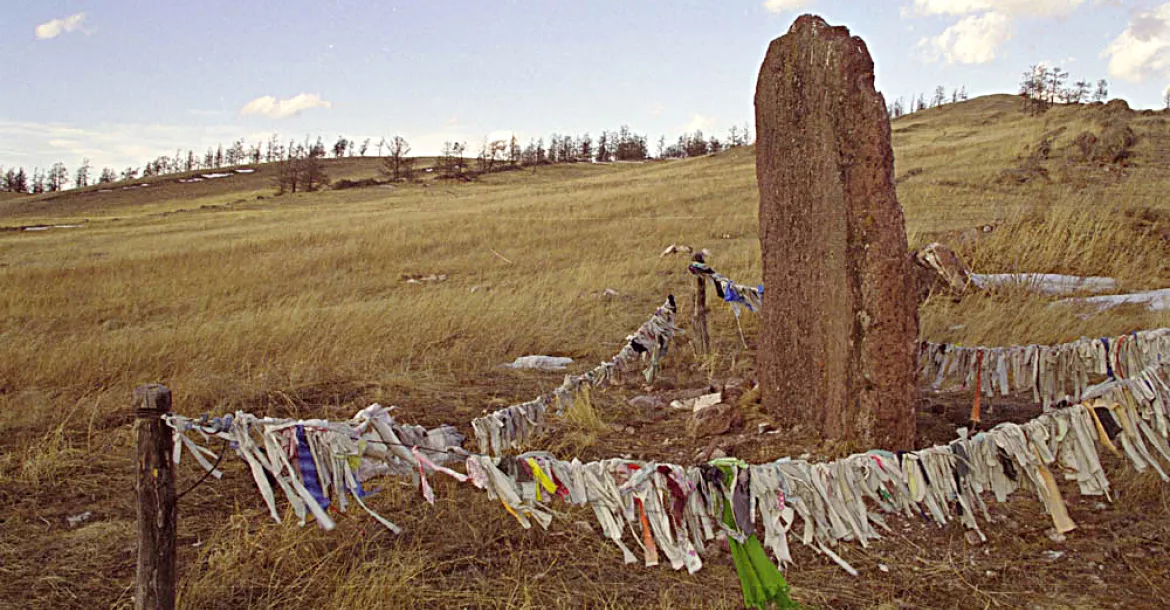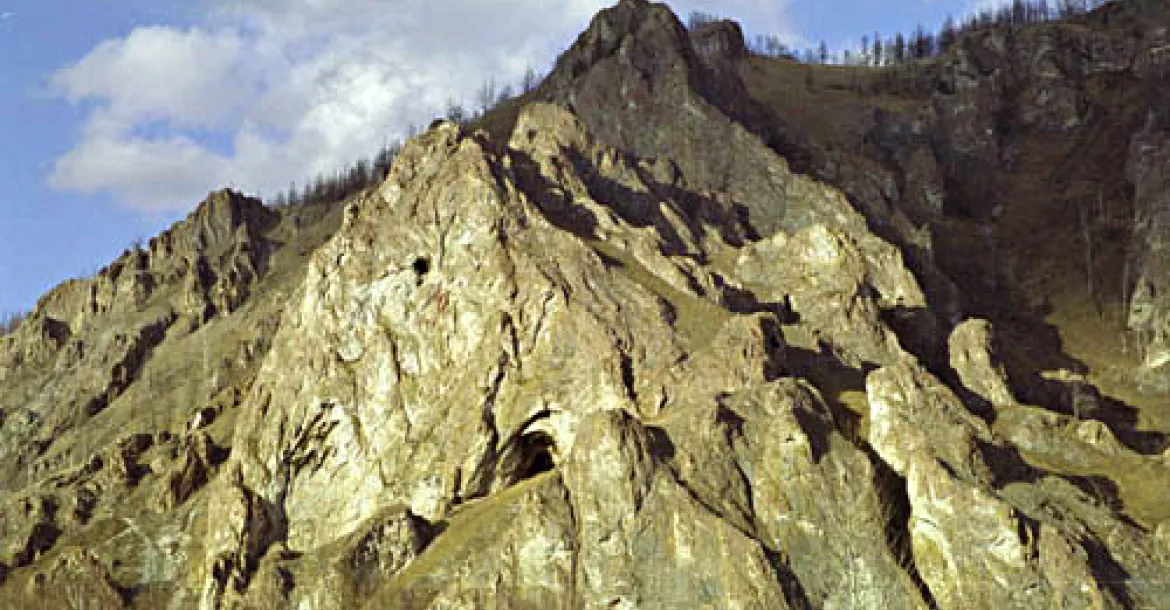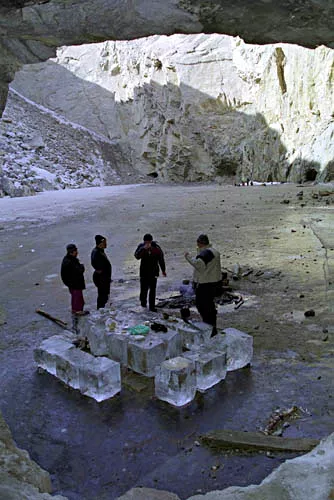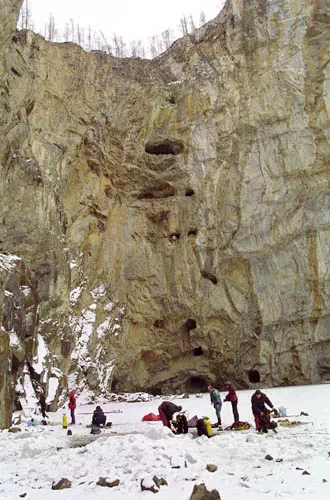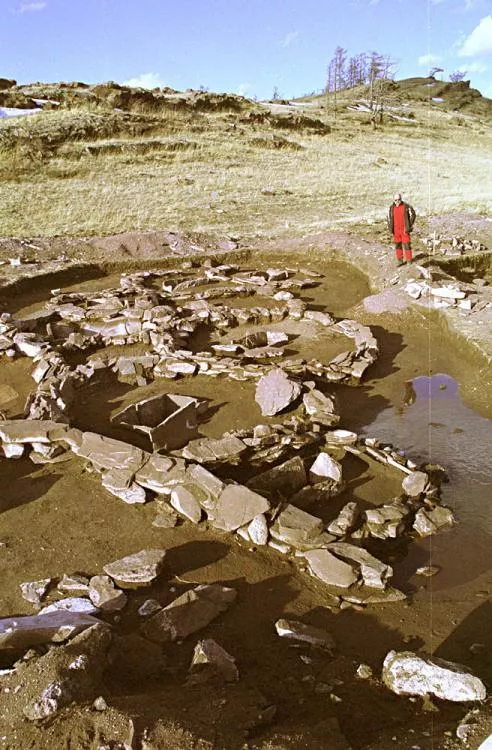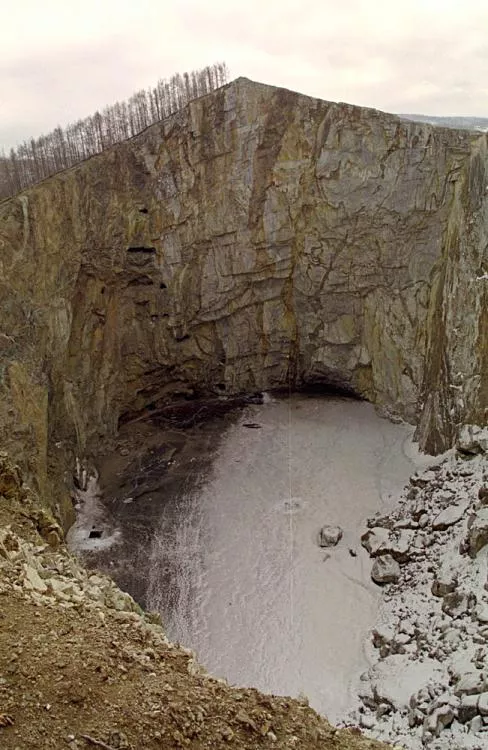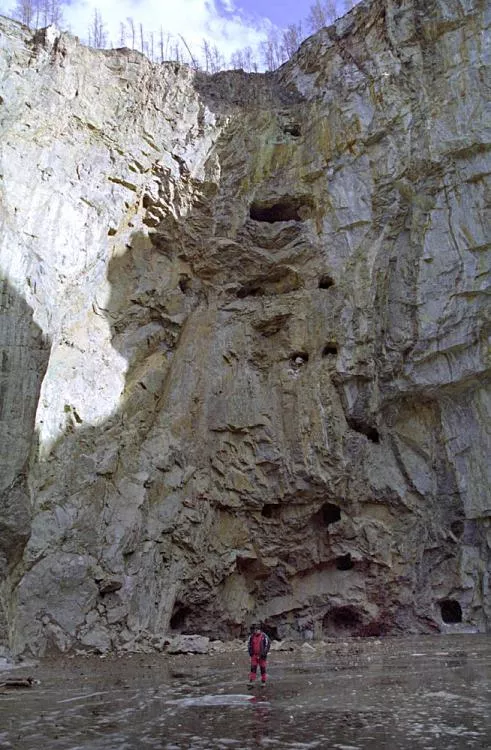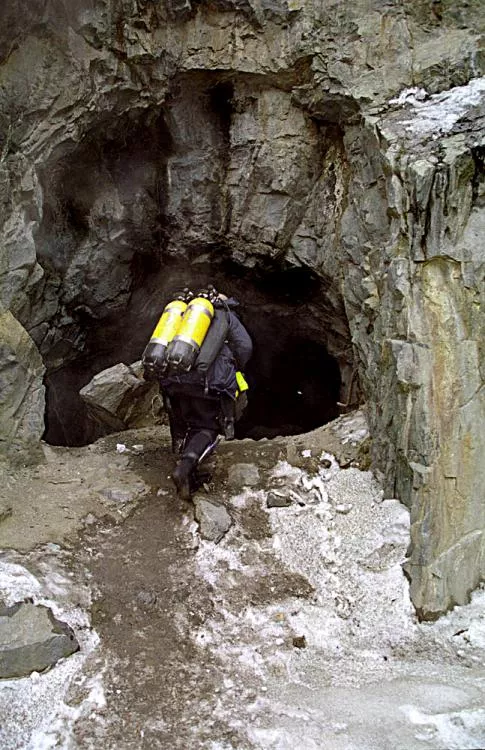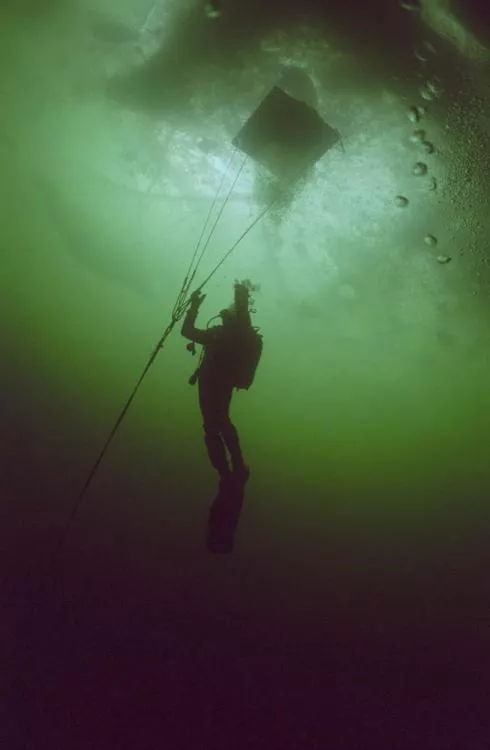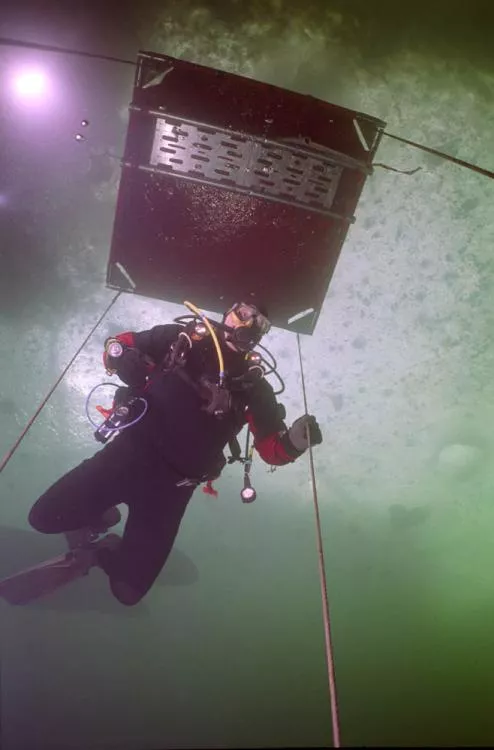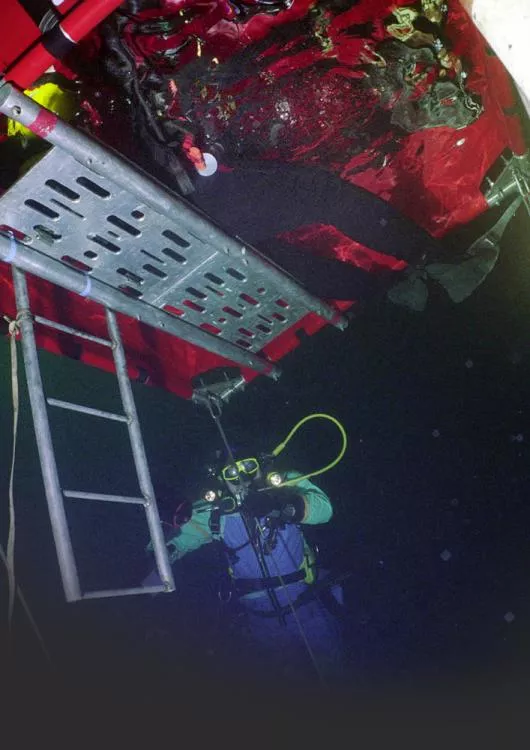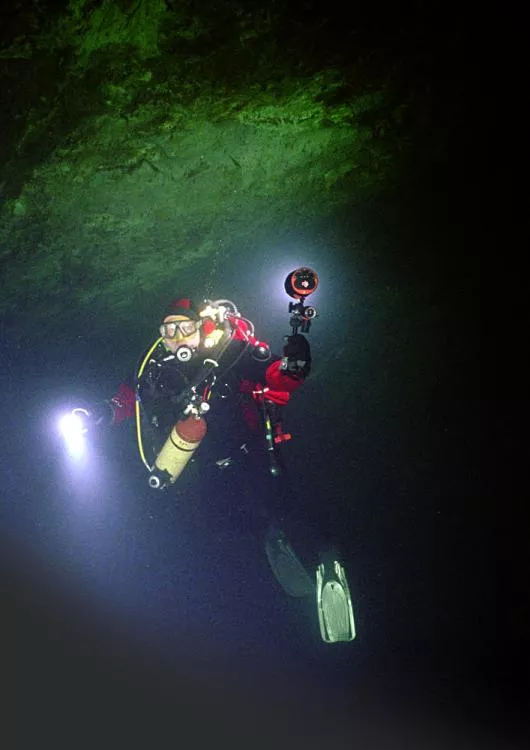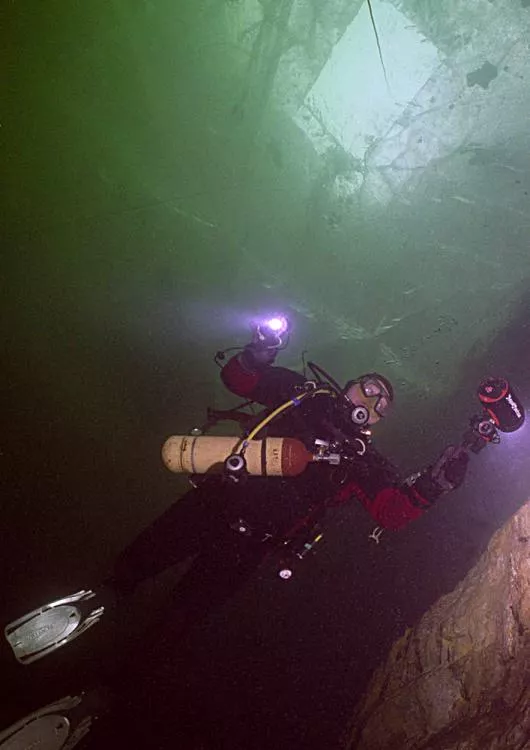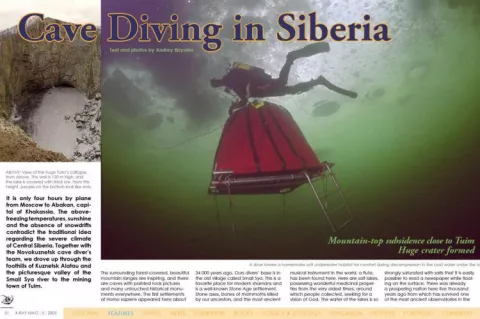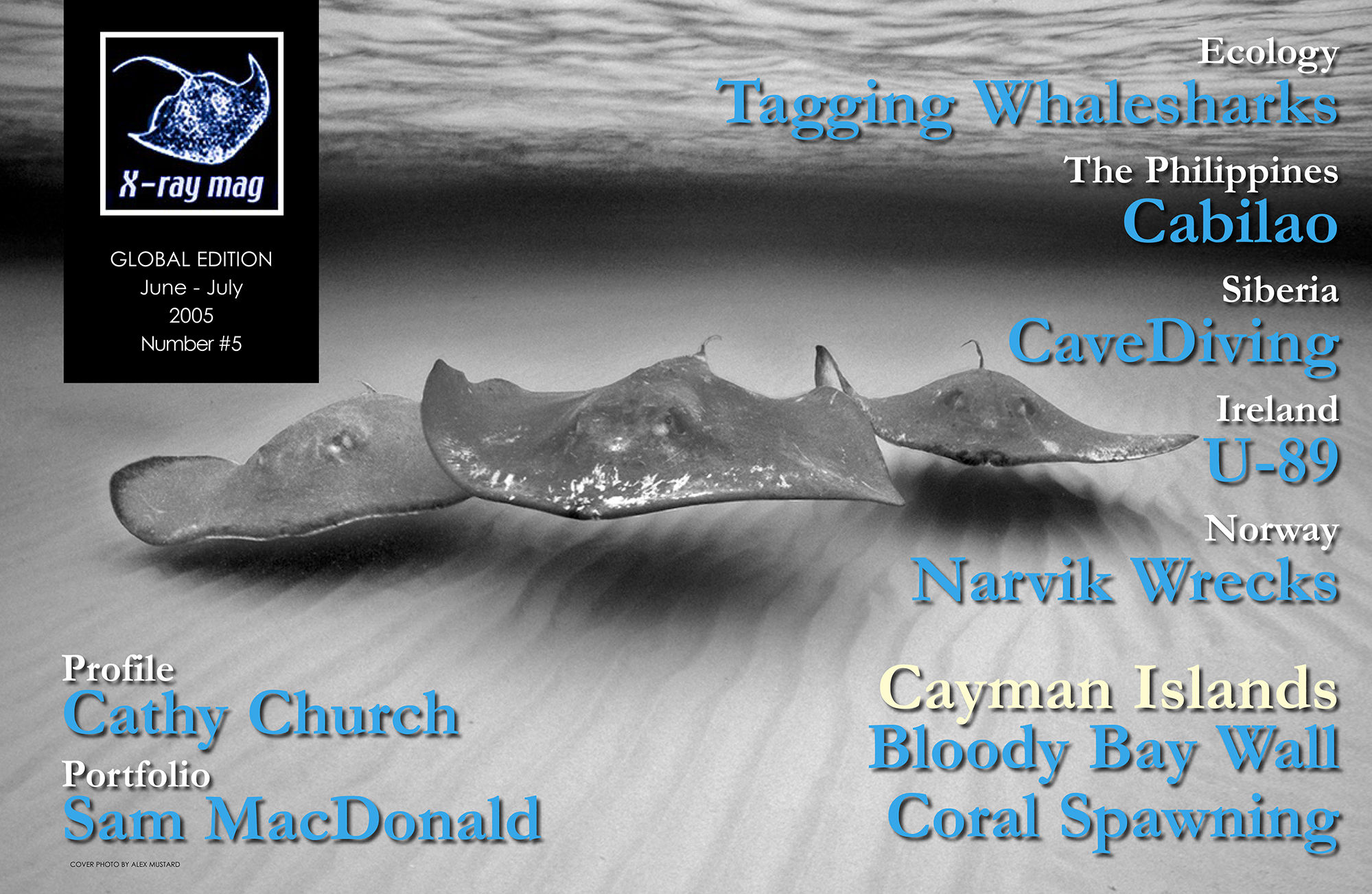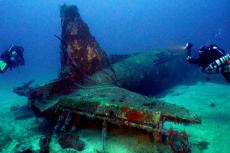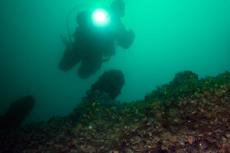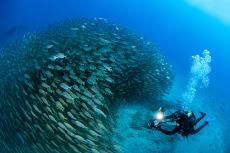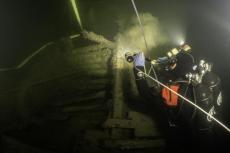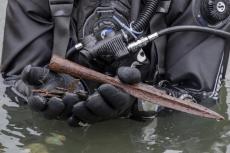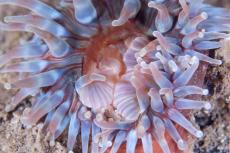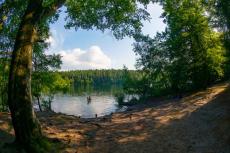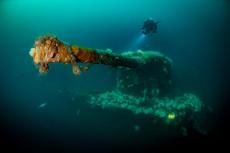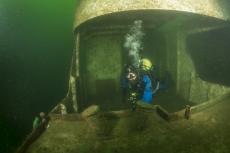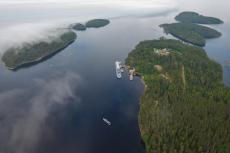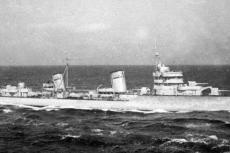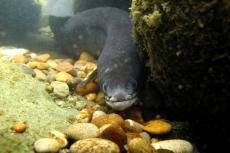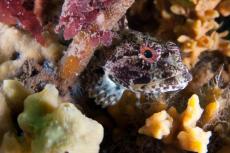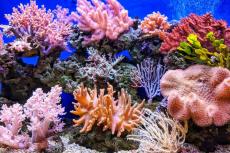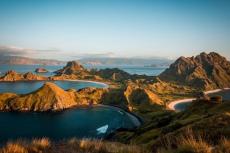It is only four hours by plane from Moscow to Abakan, capital of Khakassia. The above-freezing temperatures, sunshine and the absence of snowdrifts contradict the traditional idea regarding the severe climate of Central Siberia. Together with the Novokuznetsk cave diver’s team, we drove up through the foothills of Kuznetsk Alatau and the picturesque valley of the Small Sya river to the mining town of Tuim.
The surrounding forest-covered, beautiful mountain ranges are inspiring, and there are caves with painted rock pictures and many untouched historical monuments everywhere. The first settlements of Homo sapiens appeared here about 34 000 years ago. Ours divers’ base is in the old village called Small Sya.
Contributed by
The surrounding forest-covered, beautiful mountain ranges are inspiring, and there are caves with painted rock pictures and many untouched historical monuments everywhere. The first settlements of Homo sapiens appeared here about 34 000 years ago. Our divers’ base is in the old village called Small Sya.
This is a favourite place for modern shamans and is a well-known Stone Age settlement. Stone axes, bones of mammoths killed by our ancestors, and the most ancient musical instrument in the world, a flute, has been found here. H
ere are salt lakes, possessing wonderful medicinal properties from the very oldest times, around which people collected, seeking for a vision of God. The water of the lakes is so strongly saturated with salts that it is easily possible to read a newspaper while floating on the surface.
There was already a prospering nation here five thousand years ago from which has survived one of the most ancient observatories in the world, Shira with its dolmens resembling Stonehenge. Everywhere there are barrows and fresh excavations of them.
Our objective, though, was a huge subsidence in the top of a mountain close to Tuim town. This is a place described as Tuim camp by A. Solzhenitsyn in his book The GULAG Archipelago. It was a correctional camp for enemies of the Soviet government which worked the copper-ore mines here.
It was very hard labouring here, and after only two years many had died. In the Stalin years, all the slopes of the copper mountain were literally covered by prisoners from the Soviet concentration camps. At any one time there were up to 2300 exiles working here. Prisoners dug many shafts into the limestone in order to get to the deposits of copper- and molybdenite-ores inside the mountain.
The surviving local residents recently told that they sometimes penetrated into natural caves or, when removing the ore, created huge man-made underground caverns. Later, being afraid of a possible collapse, part of the top of the mountain was brought down by a large force-directed explosion.
This created majestic subsidence, a hole with vertical rocky walls up to 140 meters high. Some years after that a beautiful turquoise lake formed at the bottom of this hole which has since become a popular place for cave divers to explore.
Oleg
The leader of the diving project for the exploration of the Tuim subsidence was Oleg Grigorjev who is a very experienced dive instructor and cave diver from the city of Novokuznetsk. “I entered my first cave when still a schoolboy “, said Oleg. “I was attracted by the darkness and the vertical pits. I have always been keen on exploring caverns and apparently endless labyrinths, and I was fascinated by the mysterious magic of the subterranean world. I started as an ordinary caver and a member of a cave divers’ support team. We just carried cylinders through caves to sumps. But my dream and wish to dive into sumps was so strong that I began my scuba diving studies.
In 1983, at the age of 17, I plunged into my first sump in a cave, Pandora’s Box. Many years later, after becoming a dive instructor, I had to travel and dive in many various places, in warm and cold seas, rivers and lakes, to communicate with the large number of divers around in the world.”
It is not the first visit of Oleg and his team to the Tuim subsidence, they have already dived here many times. In the beginning, they used ropes and speleological techniques to get down from the top of the rocks to the lake and to carry down underwater equipment. It was a very dangerous and unsafe way because of frequent falls of rock. Later they found a more simple way, an old 250-meter horizontal mine which connected the subsidence to the open mountainside.
Entering the cave
Having armed ourselves with miners’ lanterns, we now dragged our cylinders through a seemingly endless underground tunnel. It is very cold here, with temperatures below freezing point, and the floor of the mine is covered with ice. It is necessary to be very careful that one does not strike one’s head on a low stone arch or on the many spikes of rock sticking out everywhere, and also not to fall on the slippery ice.
Happily, having avoided all dangers in the mine, we finally come to a strong sheet of transparent ice covering the lake at the bottom of the subsidence. Rocky walls reaching to the heavens hang above our heads, and the broken blocks on the ice are the traces of recent rockfalls. Recalling a Latin saying, memento more, there isn’t much relaxation.
Our expedition is a part of the long-term research project. Step by step, trip after trip, cave-divers will eventually explore all the underwater areas. There are many underwater mine shafts, some of which have very narrow entrances. In others, there are old rails, trolleys, cables and wooden logs. The bottom of the lake, some 40 meters in depth, has been filled up with huge blocks of rock. It is thought that there is an entrance into a big underwater cave somewhere within the depth of the lake.
The sun is rarely a visitor to the bottom of the subsidence so that the water temperature here seldom rises above 2 - 3°C, and visibility varies from season to season. The best visibility is up to 10-15 meters, under the ice, and therefore just as we arrived here at the end of March.
Goals
Within the framework of the present expedition our team had three main objectives:
- A support team will make two big ice-holes in the ninety centimetre-thick ice. One of them will be very close to the egress from the dry mine, where the depth of the lake is only 18 meters, and the other above a deep part, which we think is just above a probable entrance to the underwater cave. It will be necessary to lay 150 meters of guideline on the bottom between both ice-holes at depths from 18 up to 40 meters.
- Divers are to fix a diving bell. Last year an attempt to do so failed, as the six-ton steel cable could not hold it and broke. The cave explorers have now made all the necessary constructional changes and were perfectly prepared.
- After successful completion of these objectives, Oleg Grigorjev will make a deep-water dive to reach the greatest possible depth and to explore a possible new underwater cave.
“Diving is, first of all, a pleasure and an aspiration to spiritual and physiological perfection. Here we have all the requirements for this in the subsidence; huge underwater volumes, depth, gloom and the ice’s clear water. Even the most powerful torch does not always reach the opposite wall or the ceiling of the huge underground tunnel.
The history of the subsidence and the events connected with it can bring gloomy thoughts to mind of the diver. Most of all, I am afraid of the terrible cold of the water and of the non-stable functioning of the regulator, or it's freezing when it will then be necessary to close the valve of cylinders and to wait, while the first stage thaws. And so over and over again, before the next problem.
I like diving in the subsidence very much, though it is sometimes necessary to overcome my own reluctance. A very high degree of endurance, together with being very fit, is necessary for diving at the subsidence at Tuim.” says Oleg. “Siberians nevertheless differ from Europeans.
Maybe they worry less, but due to the Siberian temperament, they do things faster and more rationally. They just have no other ways for survival. To become a good cave diver, at the very least it is necessary to be very clever, prudent, and be rich.
These are the key conditions for a top-rank cave diver. And you can add to this the narrow and muddy sumps of Siberian caves, with their cold and stagnant water, which so easily grows turbid so that it is generally necessary to search for a way home through the zero visibility using only touch. This means that Siberian underwater cave explorers must also have qualities such as exceptional patience and purposefulness.”
Hypothermia
It is dangerous to dive for long in ice-cold water, in this case more than one and a half hours. Hypothermia can cause cramping and muscle pains in the hands and legs, hallucination, and loss of consciousness and control underwater. Therefore, the plan for this dive was to eliminate all such risks as far as possible.
Prior to such deep dives, speleologists usually carry out training dives, for a couple of days, down to depths of 55-60 meters with air, checking and adjusting equipment, refreshing skills and getting themselves in the right frame of mind.
For the deep-diving a bottom mix has been prepared with MOD for 90 meters, consisting of 16 % oxygen, 34% helium, and 50% nitrogen; travel mixes 28 and 50 EAN; and separate cylinders with pure oxygen for the final decompression from five meters.
The danger of the regulator freezing is so high that a time turn around point is moved from the traditional 1/3 of the volume of gas to 1/5 of it. The bigger the reserve of gas left for the return back to the surface, the safer will be such an extreme dive.
The dive
The dive begins in the ice-hole. Oleg is under the ice and begins falling very fast, following a rope, and has already reached the visibility limits of the subsidence wall. A huge arch, about 20 in height and about 30 meters wide appears at a depth of 22 meters. This is the majestic entrance to an underwater cave and the deepest underwater part of the subsidence.
Very big flat block lies on the steeply inclined slope of 45-50 degrees at the bottom of the arch. A guideline from previous dives is fixed to its lower end. At this moment, looking back, it is still possible to see the greenish gloomy daylight which can hardly make its way down through the great thickness of water. There are friends, fresh air, the sun and warmth, so far back, above a thick layer of ice and water.
Having jumped out from the slope, the cave explorer starts a seemingly endless fall down into the black attracting abyss. The fall is so fast that from time to time Oleg loses the guideline, but grabs it again at a depth of fifty meters. He tries to maintain a correct direction and orients himself on rocks of the blockage during this descent.
The size of the tunnels is very impressive. As far as the light of the torch can reach there is darkness all around, with only the right wall being visible from time to time. There is the feeling that the water here is black in colour. Oleg goes down between blocks bigger than a man. It sometimes seems that his guideline goes down straight into black emptiness.
The blockage is behind his back, and ahead, where the torch reaches, is the all-consuming gloom and uncertainty. The descent continues for 13 minutes, at which point the floor starts to appear at 70 meters depth with a little slope, and finally at 80 meters he arrives at the horizontal bottom which is covered with large rubble. Neither ceiling nor walls are visible. It is possible to move any direction and Oleg has chosen away and started to unwind the thin white guideline.
Fears about possible problems with equipment began to return with their ominous whispers, and he thinks about the long decompression time in the ice-cold water. But all the same, it is necessary to move forward, so he pulls himself together, for he has a specific geographical exploration to carry out.
And the most difficult part is not to cross that invisible line beyond which it is not necessary to go, not make that superfluous precipitate step which could lead to one’s death.
Only three minutes at that depth to spend on exploration and further searching. It is done! Oleg fixes the guideline, knotting it around a stone. It is time to return, back to warmth, light, hope and smiles – a long way back through the depths of the cave water and ice. At a depth of 40 meters, it will be necessary to re-clip on the guideline which shows the way to the decompression bell, and then to cross the 150 meters under the ice up to a shallower part of the lake.
Here, under the second ice-hole, is the warm underwater chamber and the previously stored oxygen cylinders. There, in relative comfort, it will be possible to stay for the whole decompression time.
Storytime
During the long way back to the surface Oleg tried to cheer himself up by recalling amusing stories about things that have happened to his friends underwater. In the gloom of the cave, while at one of the stops, he remembers the frightened Maldivian diver who hid from a shark in an underwater grotto. Only there, in the full darkness, did this scuba diver feel himself in safety, so nobody could entice him back.
Resisting the underwater cold and the great weariness that comes after a long deep dive, Oleg recalls one Russian cave diver, Ivan, who fell asleep in the 45 meter-deep sump. Weariness and nitrogen narcosis had so affected him that his brain was almost disabled, but he continued along the guideline by subconsciously kicking his fins. Ivan only woke in a cold sweat when his helmet struck the wall with great force.
He was really lucky that he was fastened by a clip to the guideline. “How are you? What happened? Tell us?”, friends asked him later. “I remember nothing”, Ivan replied. “I remember only the great impact of my head on the wall. Bang! Splash! And I returned to full consciousness. Where am I? In the sump? Forward! Go!”
Close to the underwater decompression chamber, Oleg thought about his idols Olivier Isler and Jocben Hasenmayer, the world-famous cave divers, the heroes that have broken many records and survived, but only because they trusted themselves, planned dives correctly and had the excellent support of the dive team. “Our power is in our team and its help is vital for me. I could not make these dives without the help and support of Alexey Bazarov, Gleb Sitnikov and Vladimir Komarisov”, said Oleg later.
“Many people think that we are abnormal. Why do we dive in such cold place? But for us this cold water diving to great depths is excellent training and fine recreation. It is just interesting for us to explore all of the subsidence at Tuim, and to dive even more deeply here. Besides, here is the ideal place to test equipment under very extreme conditions. My dream is to find the finest, most trouble-free, underwater equipment, although last time I had already begun to doubt that such equipment really exists”, said Alexey Bazarov.
“The subsidence at Tuim gives one a feeling of Man’s smallness in Nature’s greater order of things. We are moved by a hope to touch uncertainty, and a passion to be the first to explore a previously unknown subterranean aquatic space. Here, underwater, is the voice of the Abyss, giving us this unforgettable sensation of peacefulness. The history of an ancient underwater cave can be only a story, but all of us trust in the dream and we amuse ourselves by hoping to find it”, explains Gleb Sitnikov.
Afterthoughts
After the end of our diving trip, Oleg Grigorjev expressed the opinion that even if there is a technological breakthrough in the near future and the working pressures for cylinders increases up to 1000 atmospheres, or even if rebreathers which actually work in cold water make their appearance, the subsidence at Tuim will still remain a unique range for testing all these innovations.
It is not surprising that much of what is suitable for Red sea techno-divers does not function here. Gradually, step by step, ignoring whatever the advertisers might claim, cave divers will test and choose the most reliable and trouble-free equipment for all types of diving. Oleg is confident that the exploration of the subsidence will inspire other divers to do similar underwater researching in other places of Russia.
“I am a patriot of my country and believe that the future diving expertise of Russia will grow in Siberia”, with these words Oleg Grigorjev finished his story of the subsidence at Tuim. ■
Published in
-
X-Ray Mag #5
- Läs mer om X-Ray Mag #5
- Log in to post comments

